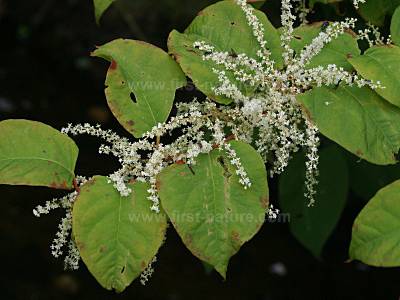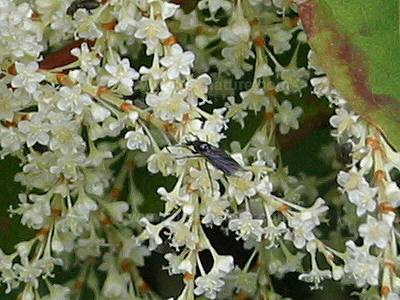Fallopia japonica - Japanese Knotweed
Phylum: Magnoliophyta - Class: Equisetopsida - Order: Caryophyllales - Family: Polygonaceae

This fast-growing invasive plant is an import that has escaped from gardens and is now crowding out many hedgerow and riverside plants. Japanese knotweed spreads via its root system. In spring it shoots up rapidly, but the Environment Agency advice leaflet suggests that it can be controlled by regular cutting. (Here at First Nature we are not convinced that cutting will do anything more than result in fragments taking root; spraying with a suitable herbicide is currently our first choice of control mechanism.)
The main problem with alien weeds is that they were brought to Britain without any of their natural predators. Recently, scientists have been experimenting with biological control techniques. Beetles, caterpillars and 'rust' fungi may be the answer, say scientists at CABI Biosciences, an inter-governmental biological research organisation.

Left unchecked, Japanese knotweed soon reaches head height; its roots can go down five metres into the ground.
Blooming times
The plant flowers from August to October before dying back to leave brittle hollow stems that stand throughout the winter.
Distribution
This alien which has invaded so much of Europe, including Slovenia, is amazingly sometimes called 'Tree of Heaven' - possibly 'Tree of Hell' may be more appropriate!



